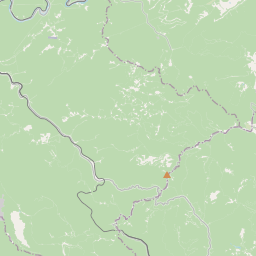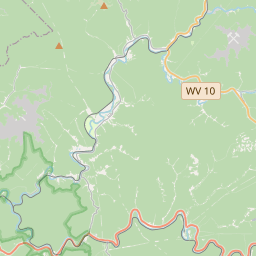Virginian Railway Motor Barn
Historical marker location:
Mullens, West Virginia
( Marker is at the intersection of Moran Avenue (West Virginia Route 16) and 1st Street (West Virginia Route 16), on the left when traveling south on Moran Avenue.)
Marker installed: 2001













© OpenStreetMap contributors
Coal Heritage Trail
Loading...
Searching for other points of interest within 3 miles of this location.The West Virginia State Capitol, located in Charleston, was completed in 1932 and features a gold dome that is taller than the dome of the United States Capitol in Washington, D.C.
About Wyoming County
Wyoming County Timeline
Wyoming County, located in the southern region of West Virginia, boasts a rich history that dates back to before the American Civil War. The area was first settled by European colonists in the late 1700s, primarily by those in search of new opportunities in agriculture and coal mining. The county's name was derived from the Delaware word "Maughwauwaume," which translates to "large plains" or "extensive meadows," aptly describing the natural beauty of the landscape.
In the late 1800s, the discovery of coal in Wyoming County led to a significant population increase and rapid industrialization. The coal mining industry became the backbone of the local economy, attracting workers from all over the country and giving rise to numerous mining towns. This economic boom brought unprecedented prosperity to the region, but it also led to labor disputes and workplace hazards that would later shape the county's history.
During the early 20th century, Wyoming County experienced several mining disasters that left a lasting impact on the community. Tragic events such as the Eccles Mine Explosion in 1914 and the Hawks Nest Tunnel disaster in 1930 claimed the lives of hundreds of miners and highlighted the need for improved safety regulations. These incidents sparked labor activism and led to the establishment of better working conditions for miners.
In recent years, Wyoming County has faced economic challenges as the coal mining industry has declined. Efforts have been made to diversify the local economy, focusing on tourism, agriculture, and small-scale industries. The county's rich heritage and stunning natural landscapes have become attractions for outdoor enthusiasts and history buffs alike. Today, Wyoming County stands as a testament to the resilience and determination of its community, as it works towards a brighter future while honoring its past.
In the late 1800s, the discovery of coal in Wyoming County led to a significant population increase and rapid industrialization. The coal mining industry became the backbone of the local economy, attracting workers from all over the country and giving rise to numerous mining towns. This economic boom brought unprecedented prosperity to the region, but it also led to labor disputes and workplace hazards that would later shape the county's history.
During the early 20th century, Wyoming County experienced several mining disasters that left a lasting impact on the community. Tragic events such as the Eccles Mine Explosion in 1914 and the Hawks Nest Tunnel disaster in 1930 claimed the lives of hundreds of miners and highlighted the need for improved safety regulations. These incidents sparked labor activism and led to the establishment of better working conditions for miners.
In recent years, Wyoming County has faced economic challenges as the coal mining industry has declined. Efforts have been made to diversify the local economy, focusing on tourism, agriculture, and small-scale industries. The county's rich heritage and stunning natural landscapes have become attractions for outdoor enthusiasts and history buffs alike. Today, Wyoming County stands as a testament to the resilience and determination of its community, as it works towards a brighter future while honoring its past.
Wyoming County Timeline
This timeline provides a concise overview of the key events in the history of Wyoming County, West Virginia.
- 1788: Wyoming County is established as part of Virginia.
- 1793: The first permanent settlement is established in what is now Wyoming County.
- 1850: Wyoming County becomes part of the new state of West Virginia.
- 1863: The Civil War Battle of Wyoming takes place in Wyoming County.
- 1880s: The area experiences a coal boom, leading to rapid population growth.
- 1907: The town of Pineville is incorporated.
- 1920s: The coal industry continues to flourish, bringing economic prosperity to the county.
- 1950s: Wyoming County experiences a decline in coal production, leading to economic challenges.
- 1963: The Hatfield-McCoy Feud, a famous family feud, ends in Wyoming County.
- 1989: The Upper Big Branch mine disaster, one of the worst mining disasters in US history, occurs in Wyoming County.
- 2015: Wyoming County becomes the center of attention as its struggling economy becomes a focal point in political discussions.